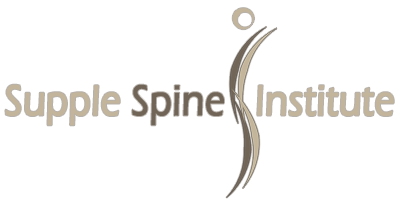Basic Veterinary Osteopathy Training ProgrammeThe two-year Basic Veterinary Osteopathy Training Program is intended for anyone who wants to be trained as an osteopath for companion animals (dogs and cats). Basic medical knowledge is part of the curriculum. Attention is given to anatomy, physiology, neurology, endocrinology, pathology, etc. Exemptions are granted to participants with basic medical knowledge, such as veterinarians, animal physiotherapists and osteopaths.
The programme consists of both classroom meetings and online classes. There are 10 modules of two days each, during which, in a classroom setting, both theory and practical skills are taught. Part of the course material is also offered online. The modules are given on Thursdays and Fridays, spread over two years. In between modules, students are expected to study the material, practise the skills learned and work on the homework assignments.
In principle, modules should be attended in a specific order. However, missed modules can be retaken at another time. Knowledge is conveyed per anatomical region, with theory and practice alternating throughout the day. Practical lessons take place in small groups, so that each participant has sufficient time to practise the acquired skills.
In order to monitor the progress of participants and to prepare them for the final exam, a short test is part of each module. The sixth module includes an interim exam, in which both theoretical knowledge and practical skills are tested. On average, participants need to score 70% or higher to take the final exam. The final exam consists of a written and a practical part, with a minimum score of 80% being required for each part to pass.
After completing the programme, the participant will be able to independently examine and treat an animal osteopathically and recognise when a referral is needed.
Requirements
This training programme is open to everyone. At the discretion of Supple Spine Institute, exemptions may be given to those with basic medical knowledge, such as veterinarians, animal physiotherapists and osteopaths.Number of participants
Given the importance of practical skills, the number of places on the training programme is limited, so that everyone is guaranteed sufficient guidance and supervision, particularly in practical lessons. Each participant should be able to bring along a dog to practise on. The dog should be social to humans and other animals, and should be able to relax when lying on its side and back.Intermediate tests, interim exam and final exam
From Module 2 onwards, participants will take short intermediate tests on the previous module. A minimum score of 70% or higher will be required. Module 6 will include an interim exam, which includes a theoretical and a practical part about the parietal and craniosacral system. A minimum score of 80% will be required. The training programme concludes with a final theoretical and practical exam. Each part must be completed with a score of at least 80% in order to successfully complete the training programme and obtain the certificate.Language
The programme is taught in Dutch or English, depending on the nationality of the participants.
Curriculum
The time spent on both theory and practical lessons is adapted to the level of each class. Because we prefer working with smaller groups, each participant is guaranteed sufficient guidance to optimally master the necessary knowledge and skills. However, personal commitment and home study will also be essential, as will practising the practical skills. During the training programme, the anatomy, physiology, neurology and biomechanics of the relevant section are discussed, as well as the osteopathic examination and treatment. We will first discuss the parietal system, followed by the craniosacral system, and finally the visceral system.
Each module consists of two days, covering both theory and practice. Each participant brings along a dog to practise on. In addition, lessons can be followed online, there will be homework assignments, and participants are expected to practise the techniques they have learned.
The structure of the modules is as follows:
Module 1 – Front leg
p>Module 2 – Hind leg
Module 3 – Sacrum/pelvis
Module 4 – Neck and back
Module 5 – Craniosacral
Module 6 – Repetition of parietal and craniosacral system and interim exam
Module 7 – Cranial nerves
Module 8 – Visceral I
Module 9 – Visceral II
Module 10 – TMJ and integration
Final exam
To register for the Basic Veterinary Osteopathy Training Programme click here.
To register for a Training Programme click here.
Call us on +31 251 234 295 for information
van Riemsdijklaan 122, 1945 XR Beverwijk, The Netherlands, contact@supplespine.nl
©2025 | Supple Spine Institute | Login

